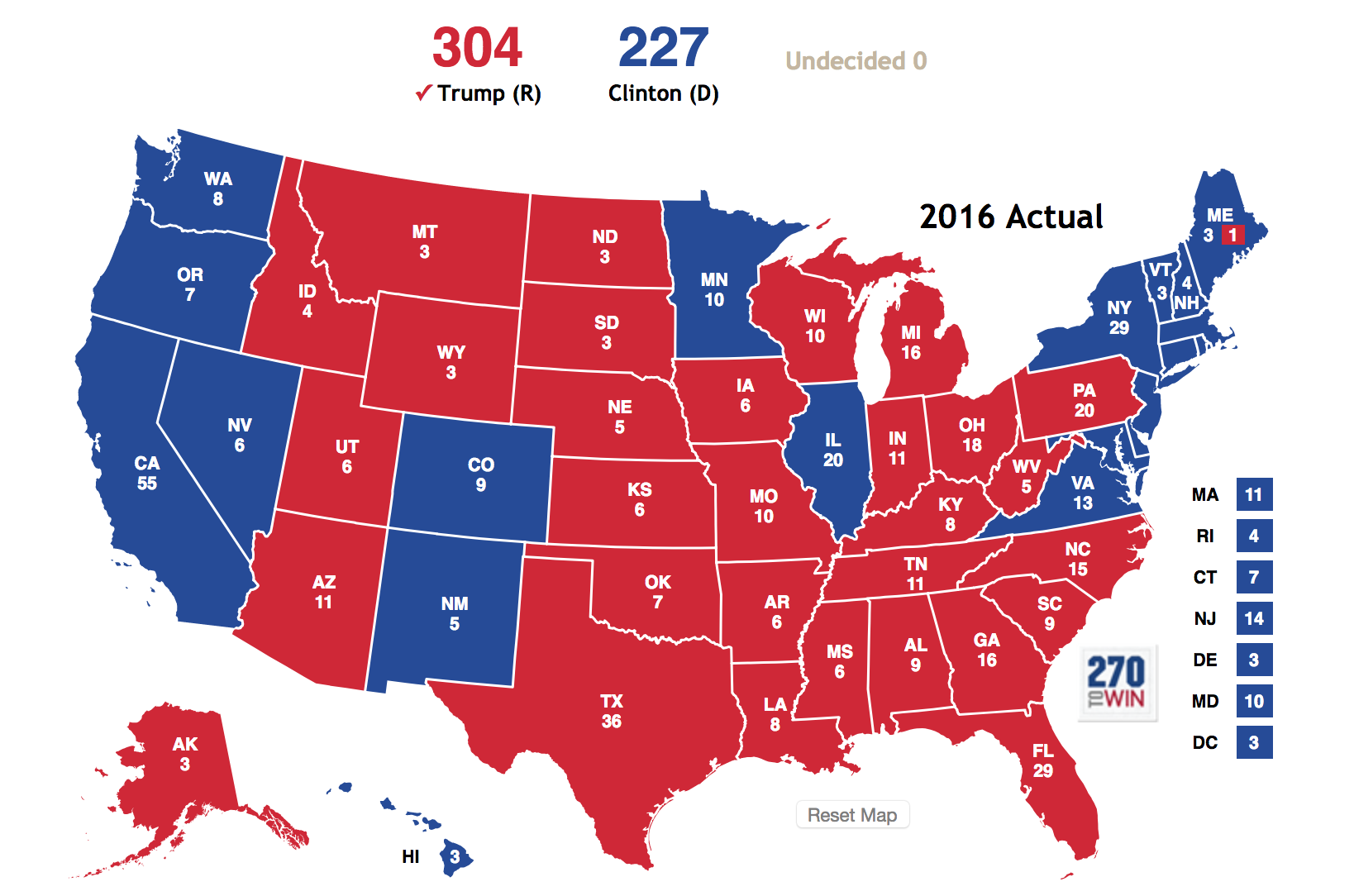This big margin concealed numerous close statewide races. Labelling a state as a swing state if the popular margin statewide was 3% or less, we see that Kennedy won these swing states: Delaware, Hawaii, Illinois, Michigan, Minnesota, Missouri, Nevada, New Jersey, Texas, New Mexico, Pennsylvania, and South Carolina. Nixon won these swing states: Alaska, California, Florida, Montana, and Washington.
Obviously there were so many swing states that the election felt like a national election. Moreover, the swing states were so different demographically that the candidates each had to appeal to big, complex coalitions of factions in order to prevail.
The Electoral College system did not appear to contribute to divisiveness, despite the extreme closeness of the outcomes in so many states and the indicative if meaningless closeness of the national popular vote.
Obscured somewhat by Kennedy’s large electoral victory was the untenable nature of the Democrats’ Electoral College block. Kennedy won New York, the state with the most electors at 45, by a 5% margin. This result marked a giant reversal from Eisenhower’s victory there in 1956 with 60% of the votes. The Democratic coalition in urban and suburban areas was racially, ethnically and religiously mixed. This coalition plainly was the base for Democrats to depend upon in future elections, given population gains in the former free states. Its composition, however, differed radically with the party’s southern base, from where 81 Kennedy electors came. That explained Lyndon Johnson’s presence on the ticket. But it foreshadowed the Republican choice to align its party with white voters in the south while relinquishing its historic Lincolnian alignment with African-Americans. New York’s results in 1960 taught the Republicans to look south for winning in the future. By 1968 Nixon’s southern strategy was in place.
With the popular vote virtually evenly divided, the parties could have taken different paths toward political victory if the national popular vote selected the president. The Electoral College system, however, made the southern electors, chosen almost exclusively by white votes, so critical that the Republican Party could not resist reshaping its policies, programs, and promises to take the pluralities in these states. The divisiveness of American politics today stems not from the popular vote in 1960 and thereafter, but instead from the pernicious electoral system.







